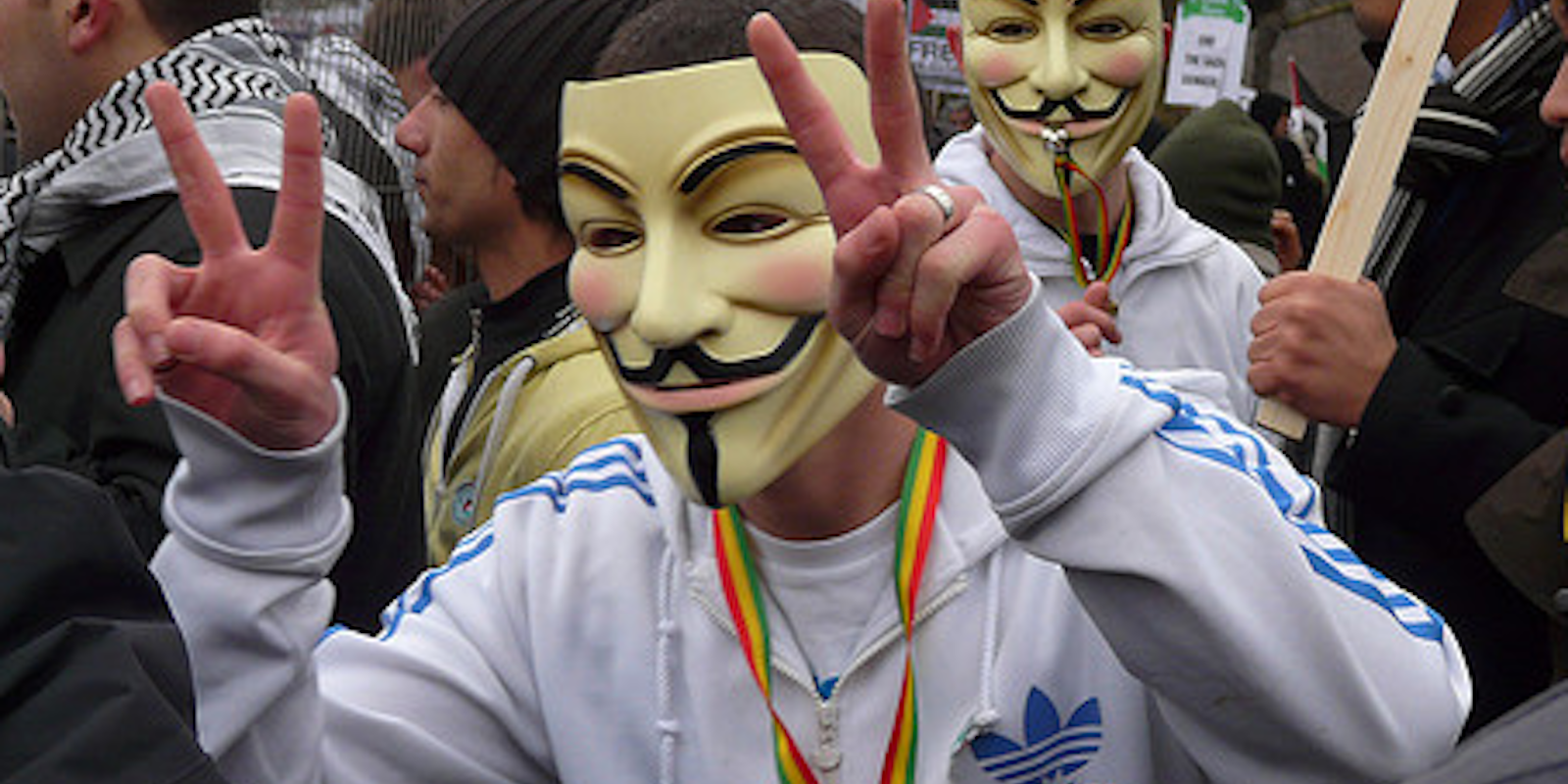Violence has once again flared up in Israel. There’s nothing new in that: Violence has been flaring in the holy land since, well, even before it became holy. What is new is that this war is being fought as much online as off.
Carmela Avner, Israel’s chief information officer, described the conflict in Gaza thusly: “The war is taking place on three fronts. The first is physical, the second is on the world of social networks and the third is cyber.”
Two of this war’s three fronts are on the Internet. At first glance, they may seem trivial in comparison to the first front, in which missiles cost actual lives. However, lives are no less at stake in the second two.
The third front that Avner mentions was opened when Anonymous joined the battle. When violence erupted in Gaza, Israel moved to cut off all communications from Palestine, a typical tactic in any armed conflict. That move included cutting off Internet access in the region, and that was too much for Anonymous. To members of Anonymous, that was an unjust attack on innocent civilians.
So Anonymous stepped in, attacking 10,000 Israeli websites and successfully hacking, defacing, or taking down 600. To be sure, much of this action is cosmetic. For many government agencies, the loss of a website is of little consequence. Does anyone imagine that the Israeli Defense Force’s homepage is anything more than a public relations and recruiting tool?
Nevertheless, the interruption of the Internet should not be discounted. Despite Americans’ threats, it is actually next to impossible to bomb anyone into the stone age. However, disrupt the information flow—energy systems, emergency systems, communications systems which coordinate everything from military maneuvers to food delivery—and the stone age returns remarkably fast. And stone-age Earth cannot support anything near the level of population it supports now.
***
In a way, propaganda may seem like something of a sideshow in a war. But it can have surprisingly long effects. We may very well remember @AlqassamBrigade a hundred years hence the way we remember “Tippecanoe and Tyler too” and Tokyo Rose.
@AlqassamBrigade and @IDFSpokesperson have dispensed with planes dropping pamphlets and are now disseminating their propaganda by tweet. This change of venue has some darkly hilarious consequences, arising particularly from the fact that the two misinformation machines can talk to each other directly now.
The Israeli Defense Force account recently tweeted, “We recommend that no Hamas operatives, whether low level or senior leaders, show their faces above ground in the days ahead.”
Hamas responded through its account (Alqassam Brigade): “Our blessed hands will reach your leaders and soldiers wherever they are (You Opened Hell Gates on Yourselves).”
The U.K. Foreign Office couldn’t stay on the sidelines, tweeting “We continue to call on all sides to exercise restraint to prevent a dangerous escalation that would be in no one’s interests.”
On the one hand, while people are actually dying, these Twitter accounts are trading puffed up banter like teenagers from rival schools before the big game. Of course, the schoolmarm has to step in to tell the kiddies to save it for recess.
We all love a good, devil-may-care attitude on the battlefield (at least in movies). But really, on Twitter?!?
***
There’s been a lot of argument about whether social media has actually had any real impact on the Arab Spring.
We got a pretty big demonstration that, in fact, tweets do matter earlier this week when the United Arab Emirates banned Guy Fawkes masks on their National Day on Dec. 2. The U.A.E. apparently views the mask, which was being sold decorated in the country’s colors in online stores for $13, as a statement of “unrest against its system.”
That the Guy Fawkes mask, a reference to an early 17th century English Reformation event, popularized by a 2006 Anglo-American movie and taken up as a symbol of resistance by Internet hackers, could become a serious symbol of resistance in the Arabian Peninsula’s U.A.E. was a huge demonstration, to me, of the importance of the Internet in the Arab Spring.
The role of the Internet as a communications tool that coordinated protests was ultimately minor. It is rather the Internet as a venue of assembly, as a place where people can form communities around certain values and ideas (symbolized by Guy Fawkes masks) that is the true revolutionary power of the Internet.
With each advance in technology, communications has become an increasingly decisive aspect of war and revolution—both in that technology’s practical application as a tool of war and as an indirect medium of influence. Is it possible that with the Internet, technology has advanced to the point where communications is the decisive front of war and the trenches are the sideshow?
And if that is possible, what does it mean for war—and for resistance?
Photo by blahflowers/Flickr


